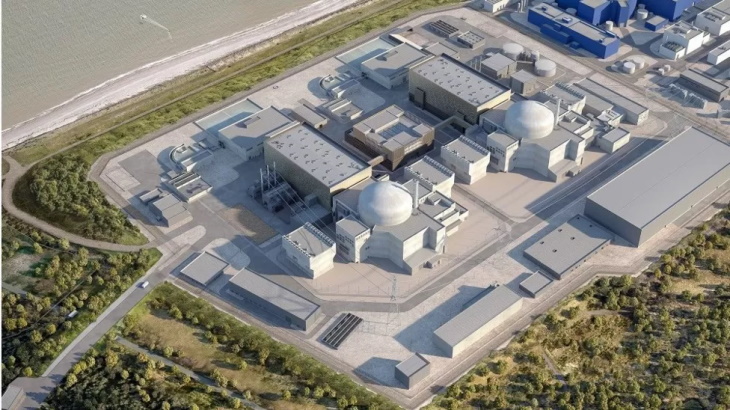More funding for Sizewell C preparations
The UK government has made available a further GBP341 million (USD434 million) of previously allocated funding for development work on the Sizewell C nuclear power plant project in Suffolk, England. It said the extra money will help prepare the site for construction, procuring key components from the project's supply chain, and expanding its workforce.

Sizewell C (Image: EDF Energy)
The funding - made available from the Department for Energy Security and Net Zero's Capital Budgets, as agreed at the 2022 Autumn Statement - would see activity ramp up at the Suffolk site, supporting continued preparation works, such as constructing onsite training facilities for 1500 apprenticeships, further development of the plant's engineering design, and direct investments in the local community ahead of work starting.
The funding would build on the government's existing GBP870 million stake and help drive progress towards the long-standing objective of reaching a Final Investment Decision on a new large-scale nuclear project this Parliament.
This is the second tranche of planned government investment in recent months and follows GBP170 million of additional funding announced in July, as a permitted legacy subsidy modification to the investment scheme under the UK's subsidy control rules. The GBP341 million that has been made available for investment in Sizewell C represents a permitted legacy modification to the same scheme.
"This is great news and puts us in an even stronger position to start full construction," said Sizewell C Company Joint Managing Director Julia Pyke. "It will also allow us to implement several community schemes over the next few months. We want people living near Sizewell C to see the benefits of the project as soon as possible and we're looking forward to getting started on a range of proposals which will bring real improvements to the area well before the main construction gets under way."
"Sizewell C will be a significant part of the revival of nuclear energy in this country - providing clean, home-grown power to millions of homes, providing thousands of jobs and ending reliance on foreign electricity to bolster our energy security," added Nuclear and Networks Minister Andrew Bowie. "Today's funding announcement is a clear demonstration of the government's commitment to this vital project, and will mean the site will be shovel-ready, and work able to start, much more quickly."
EDF agreed in October 2015 with China General Nuclear (CGN) to develop the Sizewell C project to the point where a final investment decision could be made. EDF had an 80% stake and CGN a 20% stake but the UK government's attitude to Chinese involvement in such UK projects has since changed and in November last year it paid GBP679 million to become a 50% partner alongside EDF, with CGN exiting the project. In March this year, the UK's Environment Agency granted environmental permits - a radioactive substances activity permit, a combustion activity permit and a water discharge activity permit - for the plant.
The plan is for Sizewell C to feature two EPRs producing 3.2 GW of electricity, enough to power the equivalent of around six million homes. It would be a "replica" of the Hinkley Point C plant, under construction in Somerset. EDF Energy submitted a development consent order (a planning application) for the plant in May 2020, which was granted in July last year.
A new report from the Heart of the South West Local Enterprise Partnership reveals Hinkley Point C's role as a catalyst for growth, job creation, and prosperity. It says with the peak of construction still to follow, Hinkley Point C has already provided a significant boost to the local economy close to the construction site. More widely, across the Heart of the South West, for every pound invested in the project, the local region is gaining GBP2.50 of value.
In addition, productivity in Bridgwater, the town closest to the project, is growing faster than anywhere else in the region, and well above the national average. Hinkley Point C has also led to a significant surge in the number of medium and large companies setting up, expanding, or relocating to the region, bringing new investments and opportunities. The project is forecast to provide 25,000 employment opportunities during the construction phase, and has already trained over 1000 apprentices.
The UK's energy strategy unveiled in April set the target for eight new reactors plus small modular reactors to produce 24 GWe capacity by 2050, meeting about 25% of the UK's projected electricity demand. The UK currently generates about 15% of its electricity from about 6.5 GW of nuclear capacity.
Researched and written by World Nuclear News
- China Institute of Atomic Energy
- Nuclear Power Institute of China
- Southwestern Institute of Physics
- China Nuclear Power Operation Technology Corporation, Ltd.
- China Nuclear Power Engineering Co., Ltd.
- China Institute for Radiation Protection
- Beijing Research Institute of Uranium Geology (BRIUG)
- China Institute of Nuclear Industry Strategy (CINIS)
- China Nuclear Mining Science and Technology Corporation


